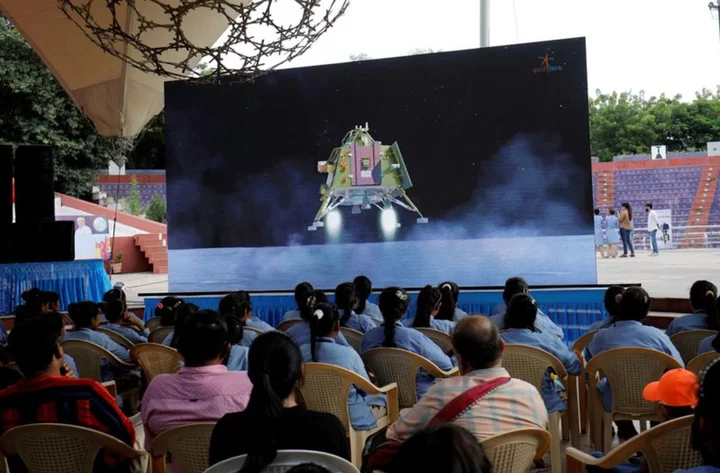
India aims to send astronaut to the moon by 2040
NEW DELHI India aims to send an astronaut to the moon by 2040, the government said on Tuesday,
1970-01-01 08:00

Nasa launches Psyche mission to study an ancient metal asteroid
Nasa has launched its Psyche craft into space, on a mission to study an ancient, metallic asteroid. The spacecraft set off on a six year journey, carried away by one of SpaceX’s Falcon Heavy rockets. It is aimed at an asteroid, also called Psyche, where it will arrive in 2029 and hopes to look back to the beginnings of our own Earth. Most asteroids tend to be rocky or icy, and this is the first exploration of a metal world. Scientists believe it may be the battered remains of an early planet’s core, and could shed light on the inaccessible centers of Earth and other rocky planets. SpaceX launched the spacecraft into a midmorning sky from NASA’s Kennedy Space Center. Psyche should reach the huge, potato-shaped object in 2029. After decades of visiting faraway worlds of rock, ice and gas, NASA is psyched to pursue one coated in metal. Of the nine or so metal-rich asteroids discovered so far, Psyche is the biggest, orbiting the sun in the outer portion of the main asteroid belt between Mars and Jupiter alongside millions of other space rocks. It was discovered in 1852 and named after Greek mythology’s captivating goddess of the soul. “It’s long been humans’ dream to go to the metal core of our Earth. I mean, ask Jules Verne,” said lead scientist Lindy Elkins-Tanton of Arizona State University. “The pressure is too high. The temperature is too high. The technology is impossible,” she added. “But there’s one way in our solar system that we can look at a metal core and that is by going to this asteroid.” Astronomers know from radar and other observations that the asteroid is big — about 144 miles (232 kilometers) across at its widest and 173 miles (280 kilometers) long. They believe it’s brimming with iron, nickel and other metals, and quite possibly silicates, with a dull, predominantly gray surface likely covered with fine metal grains from cosmic impacts. Otherwise, it’s a speck of light in the night sky, full of mystery until the spacecraft reaches it after traveling more than 2 billion miles (3.6 billion kilometers).Scientists envision spiky metal craters, huge metal cliffs and metal-encrusted eroded lava flows greenish-yellow from sulfur — “almost certain to be completely wrong,” according to Elkins-Tanton. It’s also possible that trace amounts of gold, silver, platinum or iridium — iron-loving elements — could be dissolved in the asteroid’s iron and nickel, she said. “There’s a very good chance that it’s going to be outside of our imaginings, and that is my fondest hope,” she said. Believed to be a planetary building block from the solar system’s formation 4.5 billion years ago, the asteroid can help answer such fundamental questions as how did life arise on Earth and what makes our planet habitable, according to Elkins-Tanton.On Earth, the planet’s iron core is responsible for the magnetic field that shields our atmosphere and enables life. Led by Arizona State University on NASA’s behalf, the $1.2 billion mission will use a roundabout route to get to the asteroid. The van-size spacecraft with solar panels big enough to fill a tennis court will swoop past Mars for a gravity boost in 2026. Three years later, it will reach the asteroid and attempt to go into orbit around it, circling as high as 440 miles (700 kilometers) and as close as 47 miles (75 kilometers) until at least 2031. The spacecraft relies on solar electric propulsion, using xenon gas-fed thrusters and their gentle blue-glowing pulses. An experimental communication system is also along for the ride, using lasers instead of radio waves in an attempt to expand the flow of data from deep space to Earth. NASA expects the test to yield more than 10 times the amount of data, enough to transmit videos from the moon or Mars one day. The spacecraft should have soared a year ago, but was held up by delays in flight software testing attributed to poor management and other issues. The revised schedule added extra travel time. So instead of arriving at the asteroid in 2026 as originally planned, the spacecraft won’t get there until 2029. That’s the same year that another NASA spacecraft — the one that just returned asteroid samples to the Utah desert — will arrive at a different space rock as it buzzes Earth. Additional reporting by Reuters Read More Watch live as Nasa launches spacecraft bound to orbit Psyche asteroid Here’s how you can see the ‘Ring of fire’ solar eclipse on Saturday Nasa opens up pieces of a distant asteroid transported back to Earth Prada to design Nasa’s next-gen space suits for Artemis astronauts 1.2 mile-high ‘dust devil’ spotted on Mars by Nasa’s Perseverance rover Rover captures one-mile-high whirlwind on Mars
1970-01-01 08:00

Nasa’s Psyche mission set to launch to ancient metal asteroid today: Live updates
Nasa is about to set off to a distant, metal asteroid that could tell us how planets form. On Friday, the spacecraft – currently folded in the cargo bay of a SpaceX rocket – will leave from the Kennedy Space Centre and begin a mission that will see it arrive at what is thought to be an ancient remnant of a protoplanet in 2029. Propelled by a system of solar-electric ion thrusters being used for the first time on an interplanetary mission, the spacecraft - about the size of a small van - is expected to reach its target on the outer fringes of the main asteroid belt between Mars and Jupiter nearly six years from now. It would then orbit Psyche for 26 months, scanning the asteroid with instruments built to measure the asteroid’s gravity, magnetic proprieties and composition. Psyche measures roughly 173 miles (279 km) across at its widest point. The leading hypothesis for this asteroid’s origin is that Psyche is the once-molten, long-frozen inner hulk of a baby planet torn apart by collisions with other celestial bodies at the dawn of the solar system. It orbits the sun about three times farther than Earth, even at its closest to our planet.
1970-01-01 08:00
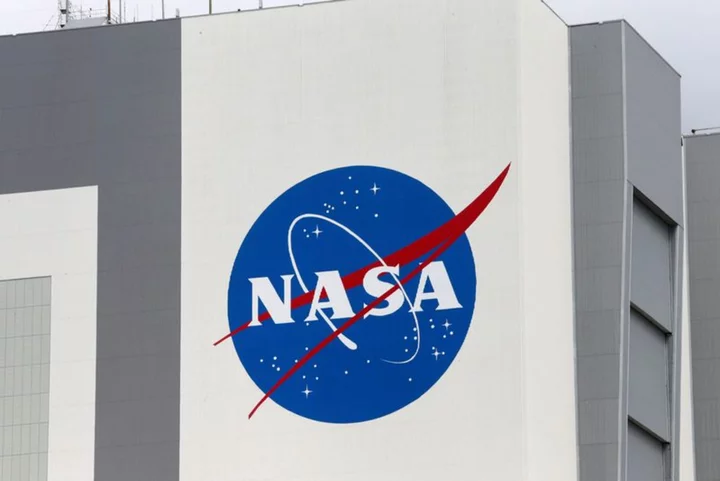
NASA set to launch spacecraft to explore metal-rich asteroid Psyche
By Steve Gorman NASA was due on Friday to launch a spacecraft from Florida on its way to
1970-01-01 08:00

25-under-25: Tyrese Haliburton is the show that never ends
Tyrese Haliburton took the leap and helped the Indiana Pacers begin building something special. He's ranked No. 3 on our list of the best young players in the NBA.
1970-01-01 08:00
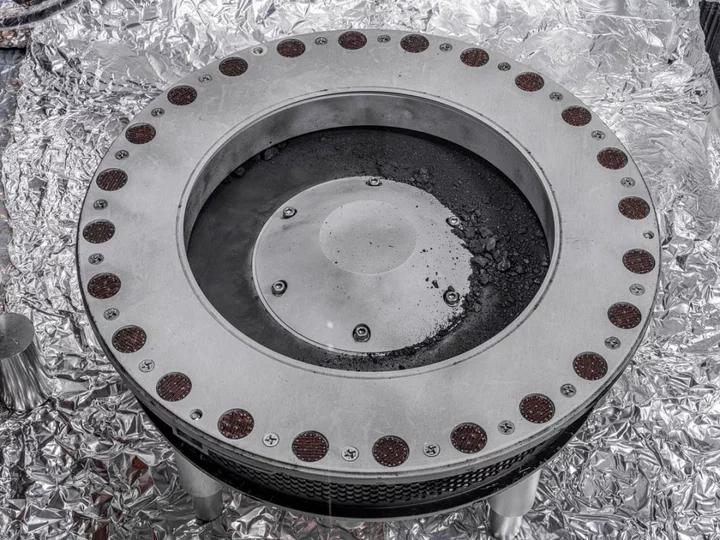
Nasa opens up pieces of a distant asteroid transported back to Earth
Nasa has revealed chunks of a distant asteroid that were transported back down to Earth. The dark, dusty sample comes from a 4.5-billion-year-old asteroid, and might include the “building blocks of life”, the space agency said. Already, the material from the asteroid Bennu has been found to include high-carbon content and water, the space agency said. But it will be distributed around the world with a view to finding out everything from the history of our solar system to how life came about. Scientists and space agency leaders showed photos and video of the asteroid material - returned to Earth last month - at a live streamed event at the Johnson Space Centre in Houston, Texas. The display came after a capsule containing an estimated 250g of rocks and dust collected from asteroid Bennu, touched down in the Utah desert near Salt Lake City on September 24. Nasa has said it was “the biggest, carbon-rich asteroid sample ever delivered to Earth”, and its contents have now been hailed as “scientific treasure”. Nasa administrator Bill Nelson said the sample will “help scientists investigate the origins of life on our own planet for generations to come”. He added: “Almost everything we do at Nasa seeks to answer questions about who we are and where we come from. “Nasa missions like Osiris-Rex will improve our understanding of asteroids that could threaten Earth while giving us a glimpse into what lies beyond. “The sample has made it back to Earth, but there is still so much science to come - science like we’ve never seen before.” Almost 60 million miles away, asteroid Bennu is a 4.5-billion-year-old remnant of our early solar system and scientists believe it can help shed light on how planets formed and evolved. The spacecraft launched on September 8 2016 and arrived at Bennu in December 2018. It dropped the samples off sealed in a capsule last month. “Already this is scientific treasure,” said the mission’s lead scientist, Professor Dante Lauretta, of the University of Arizona on Wednesday. In a statement, he added: “As we peer into the ancient secrets preserved within the dust and rocks of asteroid Bennu, we are unlocking a time capsule that offers us profound insights into the origins of our solar system. “The bounty of carbon-rich material and the abundant presence of water-bearing clay minerals are just the tip of the cosmic iceberg. “These discoveries, made possible through years of dedicated collaboration and cutting-edge science, propel us on a journey to understand not only our celestial neighbourhood but also the potential for life’s beginnings. “With each revelation from Bennu, we draw closer to unravelling the mysteries of our cosmic heritage.” Nasa‘s mission goal was to collect was 60 grams of asteroid sample. But when the canister lid was opened, Nasa said scientists discovered “bonus material” covering the outside of the collector head, canister lid, and base. There was so much extra material it slowed down the process of collecting and containing the primary sample, Nasa said. Scientists are not sure exactly how much of Bennu they brought back because the main sample chamber has not yet been opened. Mr Lauretta said: “It’s been going slow and meticulous, but the science is already starting.” He said there is “a whole treasure chest of extraterrestrial material” still to be examined. During Wednesday’s press conference, Osiris-Rex sample analyst Daniel Glavin added: “This stuff is an astrobiologist’s dream, I just can’t wait to get at it. “We’re going to learn so much about the origin of the solar system, the evolution and potentially how even life started here on Earth.” Additional reporting by agencies Read More ‘Ring of fire’ solar eclipse this month will be last until 2046 Prada to design Nasa’s next-gen space suits for Artemis astronauts 1.2 mile-high ‘dust devil’ spotted on Mars by Nasa’s Perseverance rover Rover captures one-mile-high whirlwind on Mars Earth hit by a huge solar storm that would devastate civilisation, trees show Scientists see afterglow from huge planets crashing into each other for first time
1970-01-01 08:00

US Space Force pauses use of AI tools like ChatGPT over data security risks
WASHINGTON The U.S. Space Force has paused the use of web-based generative artificial intelligence tools like ChatGPT for
1970-01-01 08:00
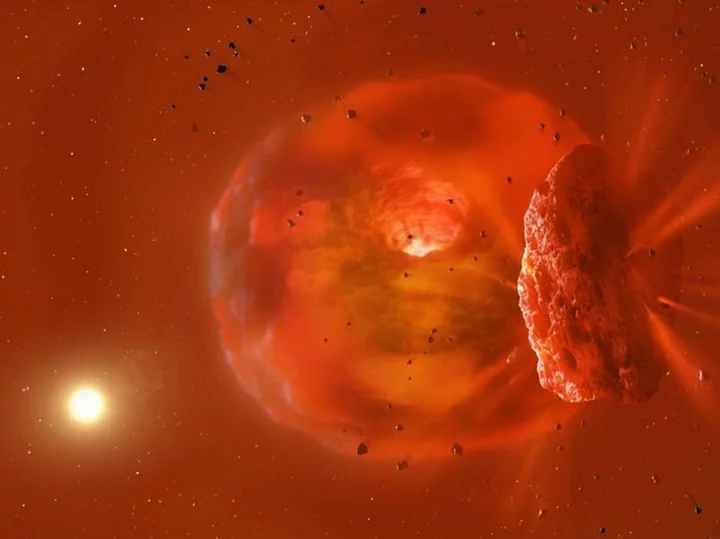
Scientists watch afterglow from two huge planets crashing into each other for first time
Astronomers have seen the “afterglow” of two huge planets crashing into each other for the first time. Scientists watched as the heat and dust that were left behind from the crash swirled in front of their star, allowing them to see the aftermath of the explosion. The incident happened when two ice giant planets collided with each other, around a star like our own Sun. A blaze of light and dust resulted, which could be seen from Earth. Those effects were first spotted by an amateur astronomer social media, who noticed unusual light coming from the star. It had brightened up in infrared – getting lighter at those wavelengths for three years – and then the optical light began fading. Scientists then watched the star in an attempt to understand what was happening. They monitored for further changes at the star, named ASASSN-21qj, to see how the star’s brightness changed. “To be honest, this observation was a complete surprise to me. When we originally shared the visible light curve of this star with other astronomers, we started watching it with a network of other telescopes,” said co- lead author Matthew Kenworthy from Leiden University. “An astronomer on social media pointed out that the star brightened up in the infrared over a thousand days before the optical fading. I knew then this was an unusual event.” Their research suggested that the glow was the heat from the collision, which could be picked up by Nasa’s Neowise mission. Then the optical light began to fade when the dust covered the star, over a period of three years. “Our calculations and computer models indicate the temperature and size of the glowing material, as well as the amount of time the glow has lasted, is consistent with the collision of two ice giant exoplanets,” said co-lead author Simon Lock from the University of Bristol. The dust is then expected to star smearing out. Astronomers hope to confirm their theories by watching as that happens, since it should be visible both from Earth and with Nasa’s James Webb Space Telescope – and they might see that dust begin its journey into something else. It will be fascinating to observe further developments. Ultimately, the mass of material around the remnant may condense to form a retinue of moons that will orbit around this new planet,” said Zoe Leinhardt, from the University of Bristol, who was a co-author on the study. The research is described in a paper, ‘A planetary collision afterglow and transit of the resultant debris cloud’, published in Nature today. Read More 1.2 mile-high ‘dust devil’ spotted on Mars by Nasa’s Perseverance rover Researchers capture first-ever afterglow of huge planetary collision Earth hit by a huge solar storm that would devastate civilisation, trees show
1970-01-01 08:00
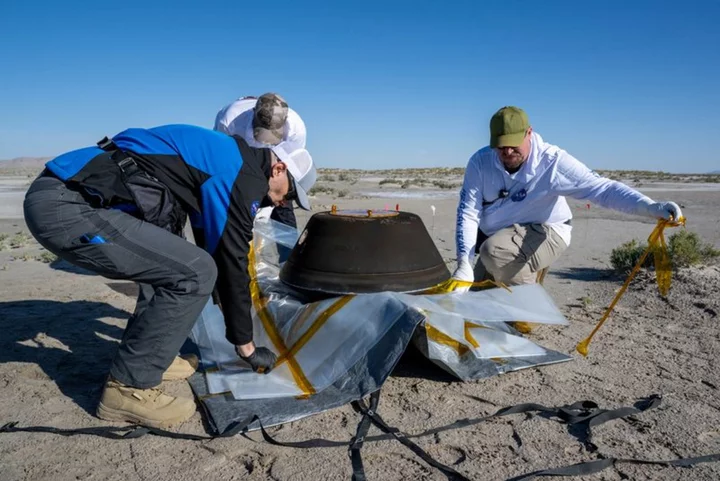
NASA to unveil first newly returned near-Earth asteroid sample
By Steve Gorman NASA was set on Wednesday to provide a first peek for the public at what
1970-01-01 08:00
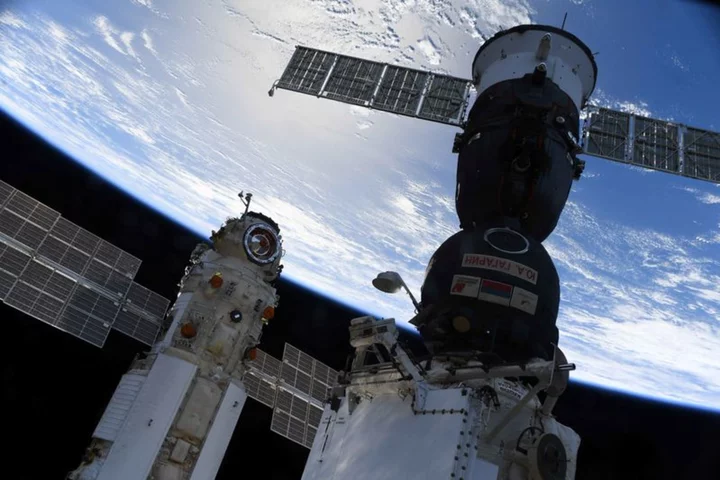
Russian module on International Space Station suffers coolant leak
By Joey Roulette (Reuters) -Russia's space agency said on Monday that its multipurpose Nauka module attached to the International Space
1970-01-01 08:00

Spain's PLD Space launches private rocket in milestone for Europe
By Graham Keeley and Tim Hepher MADRID (Reuters) -Spanish company PLD Space launched its recoverable Miura-1 rocket early on Saturday
1970-01-01 08:00
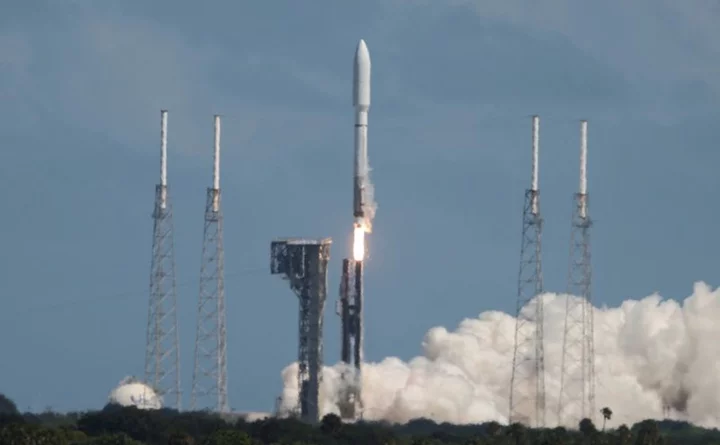
Amazon launches first test satellites for internet network
By Joey Roulette WASHINGTON (Reuters) -Amazon's first pair of prototype satellites for its planned Kuiper internet network were launched into
1970-01-01 08:00
